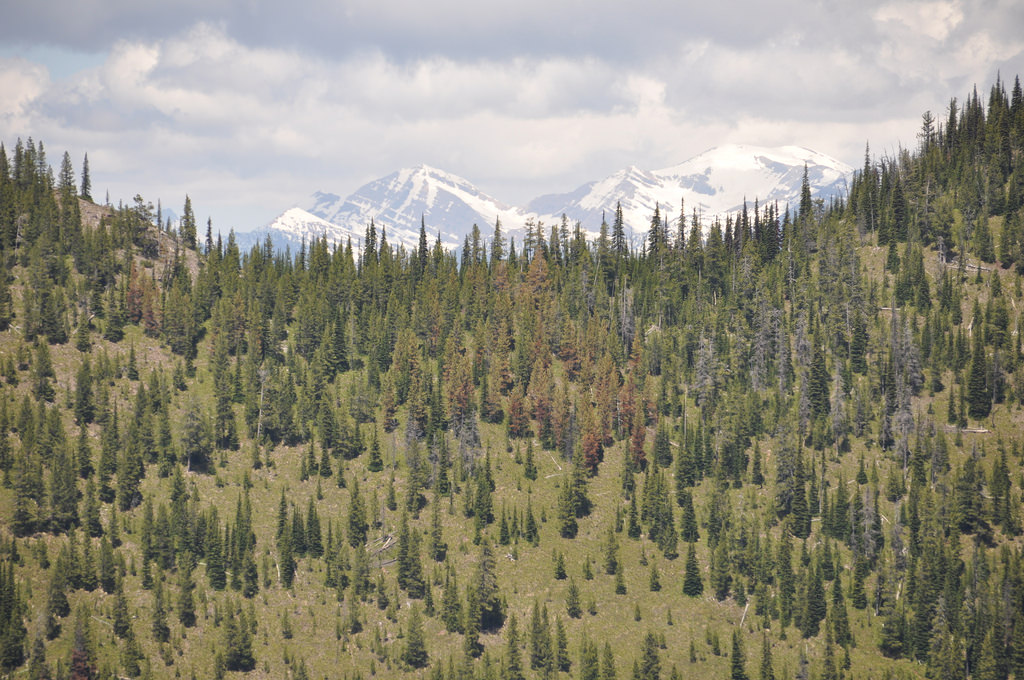
By Nicolas Apodaca, graduate assistant, Sustainability Office
For many Utahns, white pines are a fact of life. Different species of white pine fill the mountainous landscapes of the Intermountain West, and their distinctive cones dot the forest floors. Yet compounding threats caused by changes in climate and forest management are putting these trees at risk.
That’s where Dr. Diana Tomback, professor and associate chair in the Department of Integrative Biology at the University of Colorado Denver, comes in. Her innovative research on different species of white pine throughout the West is building hope for their survival. On Tuesday, April 2nd, she will discuss this pressing issue in her lecture, “Biodiversity catastrophe in real time: Loss of five-needle white pine communities and cascading consequences” as part of the Global Change and Sustainability Center’s Seminar Series.
Professor Tomback received her Ph.D from the University of California Santa Barbara, where she researched the role of Clark’s nutcracker in the dispersion of whitebark pine seeds. She has spent much of her career at the University of Colorado Denver, studying white pine populations throughout the Rocky Mountains.
In 2001, Tomback was a founding member the Whitebark Pine Ecosystem Foundation, which brought together federal officials and scientists to discuss and address threats to the Whitebark Pine alongside grassroots-level organizers and activists. She served as the Founding Volunteer Director for 16 years and now coordinates policy and outreach at the foundation. She is also Lead Scientist in the National Whitebark Pine Restoration Strategy, a federal initiative to restore white pine ecosystems.
Tomback’s work today focuses on a group of five pines, known as five-needle white pines. As she emphasizes, “forest health is now a major concern in North America.” White pines play an essential part in the forest ecologies of the American West and are among the tallest and oldest living trees in the world. They have also long been economically important as a historical source of lumber. “We have changes in fire regime driven by climate change, climate change itself, and on top of that, globalization has brought about an exchange of pests and pathogens from around the world for which our species [of white pines] have little natural resistance,” says Tomback.
There are many challenges facing the white pines in the 21st century. “Warming climate has supported the outbreak of the mountain pine beetle,” explains Tomback. They are also threatened by imported tree diseases such as white pine blister rust, which was unintentionally imported to North America from Asia. Blister rust is particularly dangerous because it spreads rapidly through spores carried by the wind, and because there is little natural resistance.
Yet despite these threats, Tomback has hope. The Whitebark Pine Ecosystem Foundation, the Fire Sciences Lab in Missoula, her own lab at the University of Colorado Denver, not to mention many other concerned organizations, are contributing to the development of restoration and prevention strategies. Her hope is that new strategies will take advantage of declining beetle numbers and innovative research to preserve these important trees.
If you’re interested in learning more about Professor Diana Tomback’s innovative research on white pines and the future of the West’s forests, come by ASB 210 on Tuesday, April 2, from 4 – 5 PM for her GCSC seminar series lecture, “Biodiversity catastrophe in real time: Loss of five-needle white pine communities and cascading consequences.”
